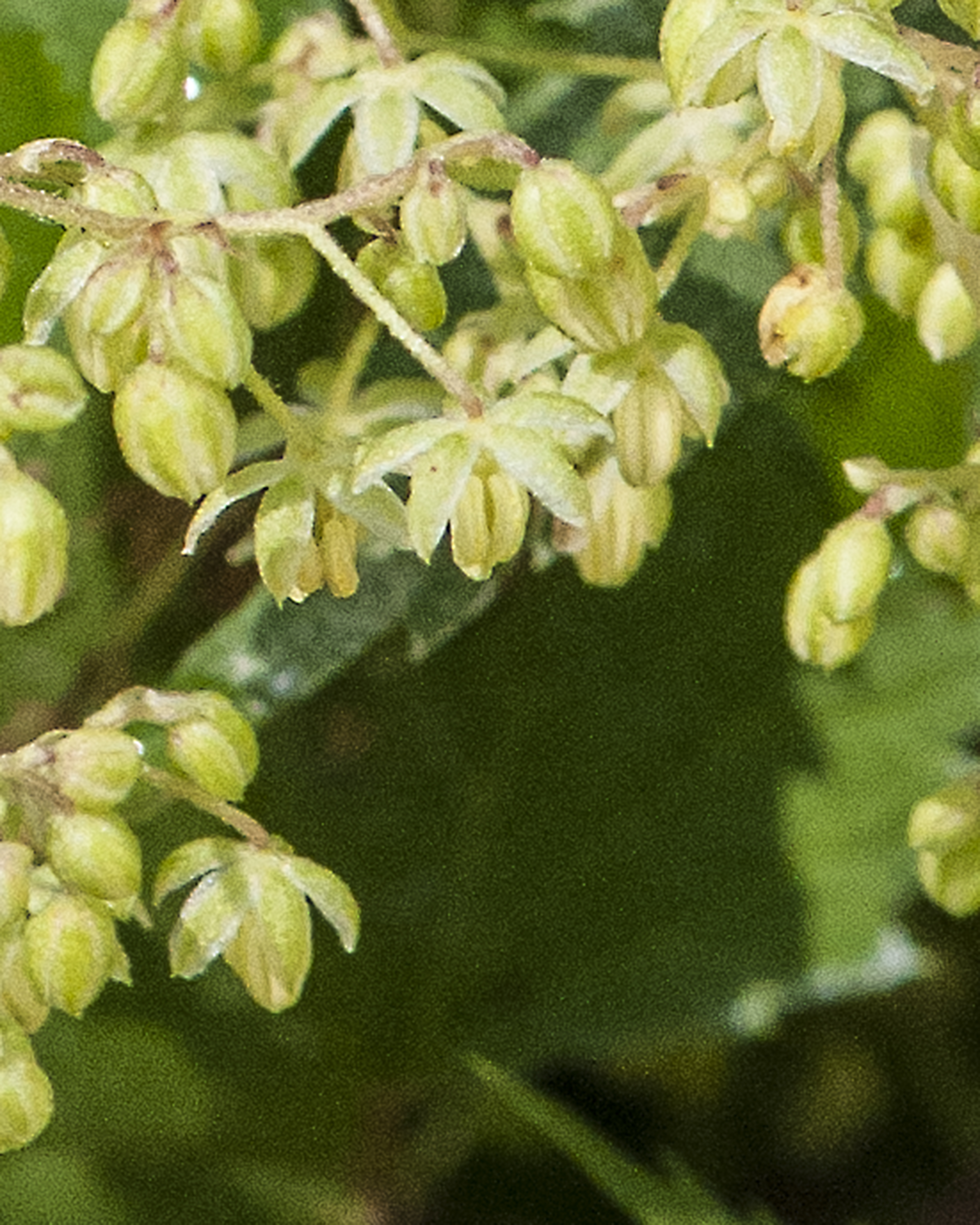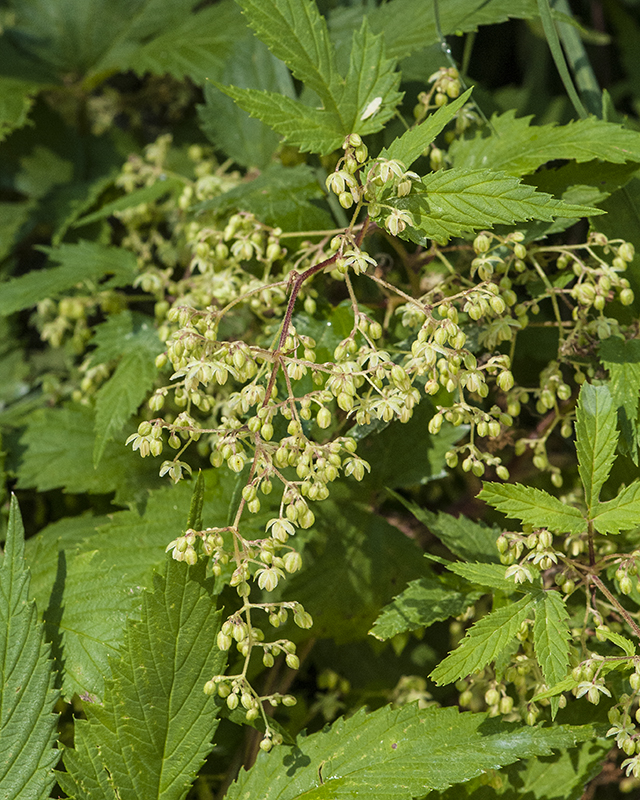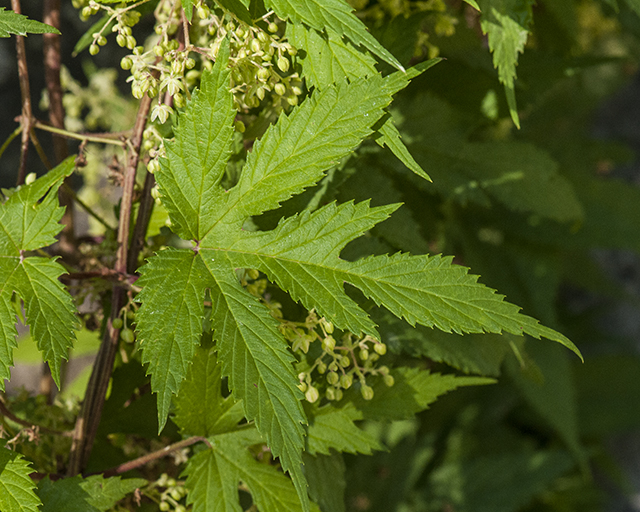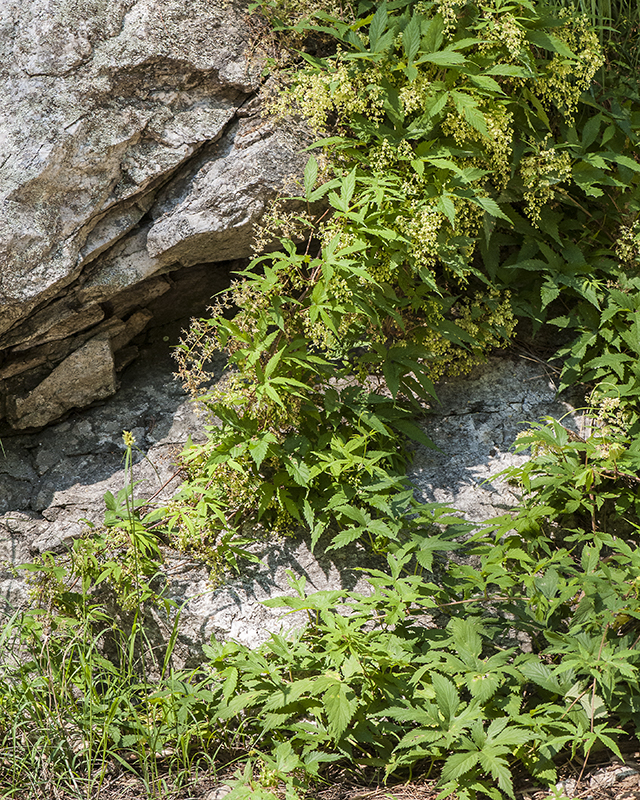Wildflowers of Southern Arizona
Common Hop.
Humulus lupulus.
Hemp (Cannabaceae) Family.
Duration: Perennial. Nativity: Non-Native. Lifeform: Vine. General: Rhizomatous vine with branching stems, can grow to be 10 m or more. Twining, branched, with rigid, two-branched hairs that help the plant climb. Leaves: With 3-7 palmate lobes with acuminate tips, venation evident, margins dentate to serrate, pubescent or glabrous. Flowers: either male or female, borne on separate plants (dioecious), small, without petals. Male flowers whitish to yellowish, with five sepals. Stamens five. Anthers glandular. Female flowers short-stalked, subtended by a leaf-like bract. Ovary covered by the membranous, fused sepals (calyx). Stigmas two, thread-like. Fruits: Achenes yellow-white, ovoid, compressed, and glandular. Ecology: Found in moist thickets, woodlands and along river banks from 6,000-8,000 ft (1829-2438 m), flowers July-August. Distribution: Ranges throughout Arizona in the higher elevation woodlands and mountains, north to Canada, east to the coast and throughout the intermountain west. Notes: This species has been widely used for ornamental use. When identifying, look for the distinctive palmate leaves and the classic hop flowers/fruit. Often in large patches in more mesic areas. Ours are often designated as being var. lupuloides. Etymology: Humulus comes from the word humus, meaning ground, referring to the trailing habit of this plant. Lupulus means "little wolf.
Santa Catalina Mountains
Marshall Gulch.
Location: Against cliff beside access road just below gate.
8/13/16
See SEINet Pictures and Description


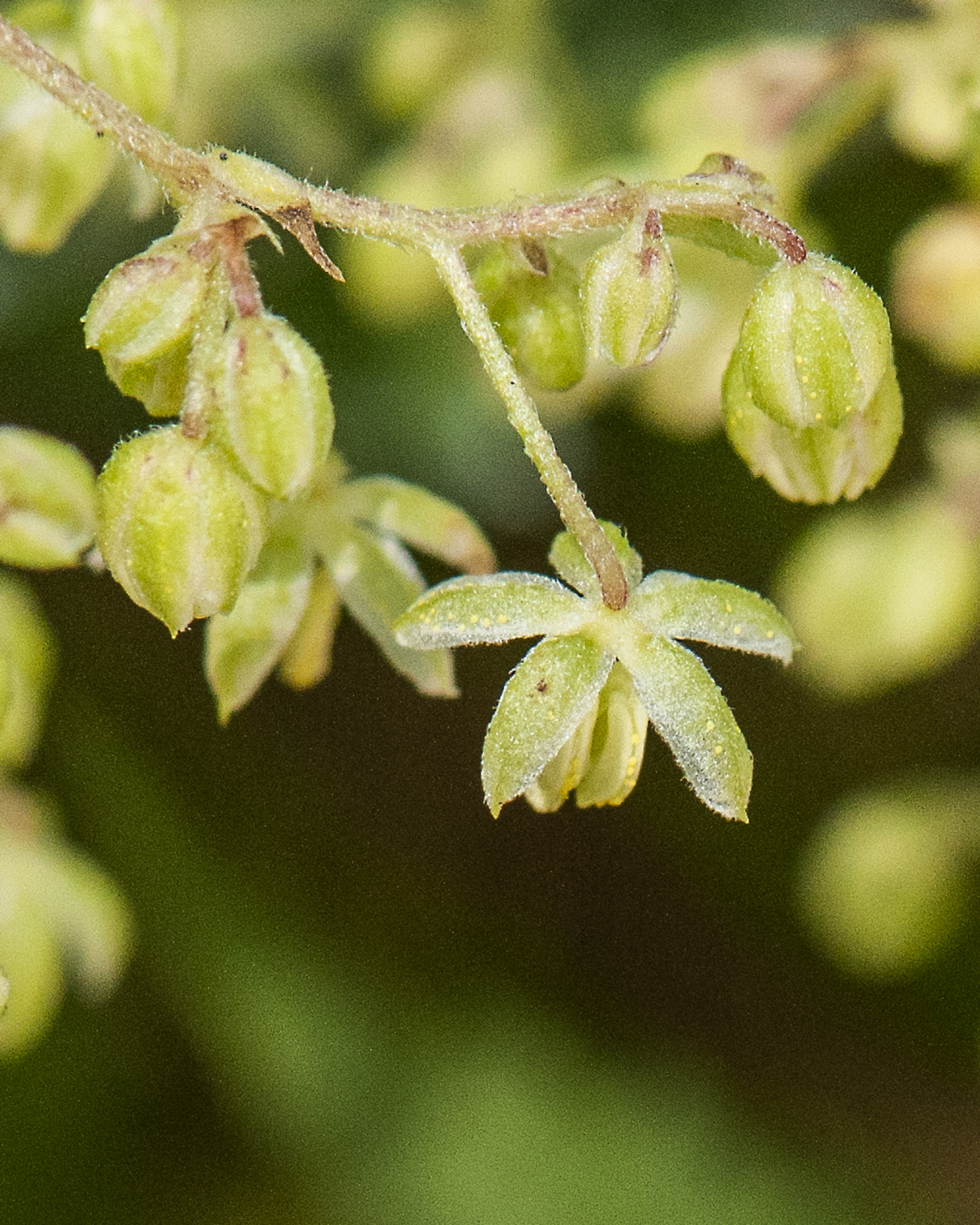 Male flower
Male flower
